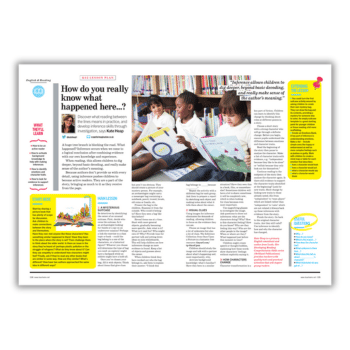Discover what reading between the lines means in practice and develop inference skills through investigation with this inference KS2 lesson plan…
A huge tree branch is blocking the road. What happened? Inference occurs when we come to a logical conclusion after combining evidence with our own knowledge and experience.
When reading, this allows children to dig deeper, beyond basic decoding, and really make sense of the author’s meaning.
Because authors don’t provide us with every detail, using inference pushes children to become active readers. They are a part of the story, bringing as much to it as they receive from the page.
Inference KS2 learning objectives
- Be an active reader
- Activate background knowledge to help with making inferences
- Identify emotions and character traits
- Look for evidence to support inferences
Starter activity
Start by sharing a picture book that has plenty of scope for discussion. Ask children to make connections between the story and themselves. Have they ever met anyone like these characters? Has something similar happened to them? Have they been to the place where the story is set?
Then challenge them to think about the wider world. Is there an issue in the story they’ve heard of (perhaps plastic pollution or the struggle of refugees)? What do they know about it? Can they use empathy to understand how characters might feel?
Finally, ask if they’ve read any other books that are similar in some way. How are they similar? What’s different? How have two authors approached the same idea in different ways?
Kate Heap is a primary English consultant and author from Leeds. Her Developing Reading Comprehension Skills series (Brilliant Publications) provides teachers with quality texts and practical activities that will inspire young readers. Follow Kate on Twitter at @kateheap1 and see more of her work at scopeforimagination.co.uk.

Similar resources
- No Refuge – Graphic novel activities about refugees for UKS2
- Short story writing – Author-led resources for KS1 and KS2
- Christmas activity sheets – KS1 / KS2 fun & educational printables
- Learning gaps – How to ensure no pupil drifts too far
- Writing horror – Write a scary scene with Fear Files: Hide & Seek













